Studio monitors are the best way to accurately mix and master your audio tracks, as they provide a very flat and even frequency response that is ideal for these purposes. No studio is complete without a good set of studio monitors. However, they do not very consider the placement of their studio monitors, but if you do, you may be wondering if suing studio monitor stands is worthwhile?
You should use studio monitor stands. Using studio monitor stands allows you to find the perfect height and angle that your monitors should be at for your setup. Stands also isolate speakers very well to prevent any misleading vibrations causing any frequencies that are not actually in the mix.
The placement of studio monitors directly impacts their functionality, and effectively they can be used for recording monitoring, as well as mixing and mastering. Finding out where your best speaker placement is challenging, but there are ways to make it easier. Let’s find out if using studio monitor stands is the best option for you.
Why Are Studio Monitor Stands Useful?
Studio monitors are the best speakers to use for any form of recording, mixing, and mastering as well. Studio monitors are fantastic speakers, but they can be less functional they should be if they are not mounted or situated correctly.
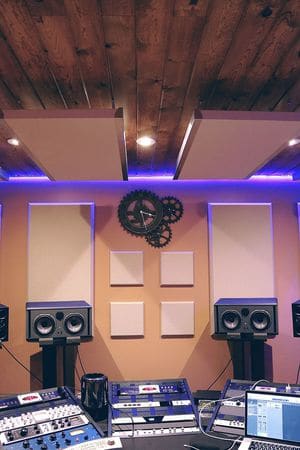
Every room is different, every recording setup is different, and every space poses its own challenges. If you have a set of studio monitors are you are considering whether or not to use speakers stands, this article is here to inform you that you should use studio monitor stands if you can.
Studio monitors are essential for every studio, and studio monitor stands are essential for all studio monitors. The main reasons why these stands are so critical is because they allow you to perfectly adjust the height and angle of your studio monitors, and they isolate the speakers better than any other type of speaker stand or speaker rest.
(You can learn more about the ideal height of studio monitors here).

Let’s go a little more in-depth regarding speaker placement on stands to help clarify these benefits.
Finding The Ideal Speaker Height And Angle
Having your studio monitors at the perfect height for you and your setup is critical for getting the most from your recordings. If your speakers are not placed at the correct angles for your room, the audio that you hear from them may be less accurate.
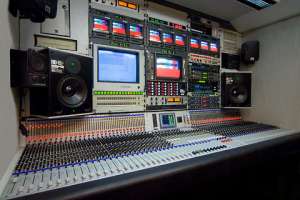
The ideal speaker placement for studio monitors should be in-line with your ears to allow for the best possible audio interface between you and your recordings. Using speaker stands is the best way to achieve this.
Using stands allows you to account for your own height as well as the height of your chair, rather than having to simply place your speakers on your desk and hope that they are well-aligned.
Stand Help To Isolate Your Speakers
Stands also allow you to place your speakers at the correct angles for your room and your seating placement to provide the best quality audio for you, allowing you to hear the full spectrum of frequencies in your audio clearly without impedance.
Using studio monitor stands also isolates the speakers from the ground or any other surfaces that may amplify or transmit certain frequencies more than others.
For example, if you have your studio monitors placed directly on your desk, as music is played through the speakers, they will cause the desk to vibrate and amplify certain frequencies, causing false feedback.
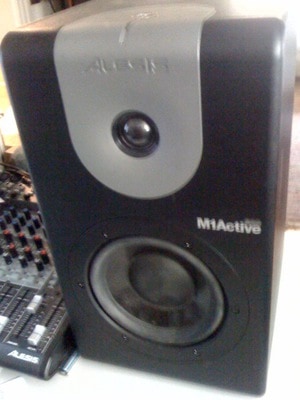
For example, speakers that are sat directly on a desk will cause the desk to vibrate with the low frequencies in the music, making it seem like the music has rich, full bass, but the bass is coming from the table, not from the music.
This means that the music was likely to sound very thin and unbalanced in the mix because the bass frequencies that you are hearing are not actually in the track.
Using some foam under the speakers to help combat this issue is common, but it is not an ideal solution because the desk will still vibrate to some degree, making mixing and mastering very difficult to do well.
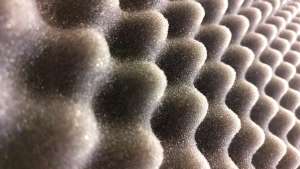
(You can learn more about soundproof foam here).
This is where the speaker stands come in. Using speaker stands with good base insulation will isolate your studio monitors from any surfaces that vibrate, allowing you to create the truest and most clean mix possible.
This will produce well-balanced tracks that are not heavy or lacking in any area, making all of your tracks sound infinitely better than they would without the speaker stands.
This clarity of tone, combined with the ideal speaker placement, makes using a studio monitor stand critical for anyone who is serious about the music that they create.
The Best Type Of Studio Monitor Stands
There is a vast range of studio monitor stands available on the market right now, and each of them claim to be the very best at what they do, but what should you look out for when buying a set of stands for your studio monitors?
The truth is that the stand that you use is almost as important as the monitors that you use, so it is best to buy the best stands that you can afford to get the most out of the studio monitors that you have already invested in.
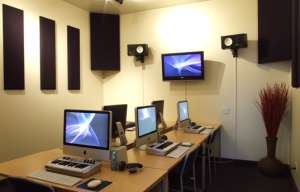
When buying studio monitor stands, try to find a set of stands that can be easily raised and lowered without tipping the speakers over. This means that the stands should have some form of a lip to keep them in place, and the speaker base must be very sturdy and stable as well.
The stands that you choose should be able to adjust to the heights that you need, so be careful not to get stands that are too short. The speaker base on the stand should be able to swivel and lock in place, providing you with the ability to find the perfect angles for your space.
Another vital aspect of the stand that you use is the isolation material that the stands are equipped with. Studio monitor stands should have very thick, well-made speaker isolation to prevent any unwanted vibrations that may negatively influence your mixing ability.
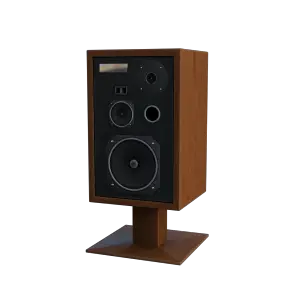
If you find speaker stands that fit these criteria within your budget, purchase them as soon as you possibly can to make the most of your recording setup.
Conclusion
If you can afford to use them, studio monitor stands should be the next studio gear that you buy. Using a good set of speaker stands will change the way you experience recordings, making it far easier to mix and master ore accurately, elevating your recordings to the level that they are meant to be.
Take the time to find the right stands for you without rushing into the first set that you find. There are many stands available, so be patient and find the monitor stands that function perfectly for you, and your mixing and mastering will be taken up a few notches instantly!
You can learn about the pros & cons of stacking studio monitors here.
